Trudy J. Morgan-Cole's Blog, page 34
August 12, 2021
The Chosen and the Beautiful, by Nghi Vo
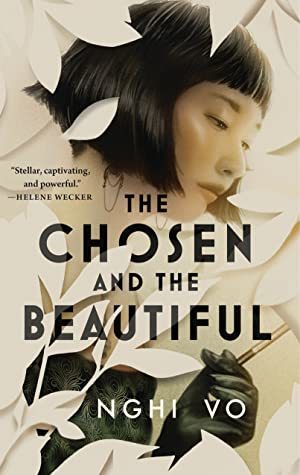
It’s hard to know what, exactly, to say about The Chosen and the Beautiful. It’s a retelling of The Great Gatsby from the point of view of Jordan Baker, and I am HERE FOR THAT. Here for any retelling that de-centres the horrible Gatsby and Daisy, who are just awful people, and brings a fascinating minor character to the foreground. I’m also here for re-imagining Jordan as a bisexual Asian orphan adopted by a wealthy American family, with a complicated identity and backstory. And once I realized what was going on (I had to go back and reread the first few pages because I’d missed a vital piece of the book summary blurb), I am even here for this all taking place in a 1920s New York where magic is real, people make pacts with the Devil, and Gatsby might be a vampire.
All that sounds as intriguing as all get out, and the book is beautifully written — at least as beautiful as Gatsby, in my opinion. Yet despite the first person point of view, Jordan remained an elusive character for me, and the potential of the magical world the book inhabits never seemed fully realized — yes, people have magical powers and it’s interesting, but what does it add to the story? I never fully felt that the fantastical elements were essential to the story. So for me, this was — not a disappointment, exactly, because I definitely enjoyed the experience of reading it, but a novel that didn’t completely fulfill its potential promise.
The Final Revival of Opal and Nev, by Dawnie Walton
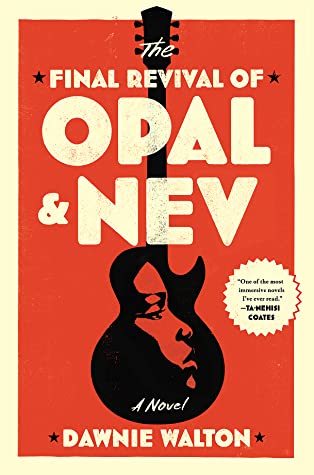
I absolutely loved this book, told in the style of an oral history, about a fictional short-lived rock duo from the early 1970s. Opal is an American Black woman with a powerful voice and an even more powerful presence. Nev is a British singer-songwriter hoping to get his big break in the US. When a producer teams them up, the result is a brief flare of musical magic, and then a decades-long estrangement.
The premise of the story is that in the present day, a musical journalist with a close family connection to Opal and Nev’s story begins researching the long-estranged duo for a biography, just as rumours are swirling that Opal and Nev are finally getting back together — maybe for a single reunion concert, but maybe for more. A tour? A new album? In the intervening decades, Nev has become a sort of Elton-John-level pop star, specializing in singable melodies that everyone adores. Opal, meanwhile, has moved out of the mainstream; she has been a performance artist, an activist, a sometime actor. Can these two reunite and rekindle the spark that once made them great?
This is a wonderful piece of fiction about the music world, but also about the forces of racism and sexism that drive much of that world. Opal, Nev, and the narrator/journalist Sunny, as well as the minor characters that Sunny interviews along the way, all come vividly to life. You have to keep reminding your self this is fiction and not the story of two real musicians.
Just a note that I read this as an e-book, but I almost wished afterwards that I’d gotten the audiobook. I never listen to novels on audio, only non-fiction, but this is apparently a full-cast audiobook with different actors reading the different roles, If you enjoy audiobooks this may be one that’s definitely worth getting in that format.
Into the Woods, by John Yorke
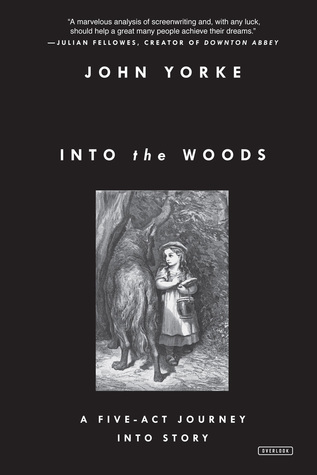
I saw a writer friend reading this book and ended up borrowing it from her. I don’t read a lot of books about writing, and when I do they’re usually more free-flowing memoir types of things with very general advice for the writing life, like Anne Lamott’s Bird by Bird and Stephen King’s On Writing. It’s unlikely that I’d pick up a book about plot structure, but since I’m thinking a lot about it lately in trying to plan the final volume of my trilogy, I decided to give this one a try.
John Yorke is a TV writer, and he approaches the topic of story structure largely from that perspective, with his examples drawn from a wide variety of TV and movies. What he says about structure doesn’t map directly on to novels, but there were some ideas that helped me trigger thoughts about the journeys my characters are on and how I need them to be changed by the end. Plus, it was just fun and interesting reading a knowledgeable scriptwriter and showrunner talk about how stories are structured and pull examples from popular culture, so I found this an enjoyable read.
July 30, 2021
Did Ye Hear Mammy Died? by Seamus O’Reilly
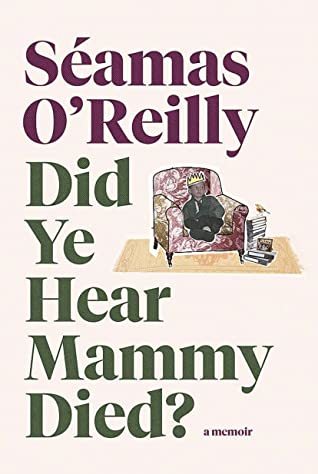
This is one of those books that’s so perfect I want to buy a paper copy now that I’ve listened to the audio book, just so I can have it on my shelf, and possibly also several other paper copies to give as gifts. I laughed more (literally LOL’d) while listening to the audio of Did Ye Hear Mammy Died? than I have at any book in a very long time. And that’s not bad for a book that is essentially about losing your mother at age 5.’
If you don’t know who Irish writer Seamas O’Reilly is, you probably don’t waste as much time online as I do. He’s the guy who got famous on Twitter for writing a hilarious thread about being called in to work at an entertainment venue while he was high on (recreational) ketamine, and having to serve drinks to the president of Ireland in that state. As O’Reilly admits himself in the book’s Acknowledgements, it’s an unlikely path that this particular story led to him writing a heartwarming memoir about his family, but what the ketamine story displayed was his ability to write about absolutely anything in the most hilarious way.
In Did Ye Hear Mammy Died? O’Reilly turns that skill not to college-age drug experimentation but to the earlier stage of his life when his mother died of breast cancer, leaving behind a bereaved husband with eleven children ranging in age from 2 to 17. (It’s worth noting, as the author does, that this was not in the 1950s when such families might have been relatively common among Irish Catholics, but in the early 1990s. Even in Derry where they lived, the O’Reillys excited quite a bit of comment as they drove around in a 13-passenger minibus).
This book manages to be both a touching exploration of grief and loss, a heartfelt tribute to a father who kept his family together, cared for, and loved in tragic circumstances, and also one of the most watch-you-don’t-drive-off-the-road-while-listening-to-it funny books I have read/heard in a very long time. It’s certainly the funniest book I’ve read since Mark Critch’s Son of a Critch, and like that other memoir of Catholic childhood, also lends itself brilliantly to the audiobook format. I cannot recommend this book highly enough; if you like a good laugh, you will almost certainly love this.
July 29, 2021
Broken (in the Best Possible Way), by Jenny Lawson
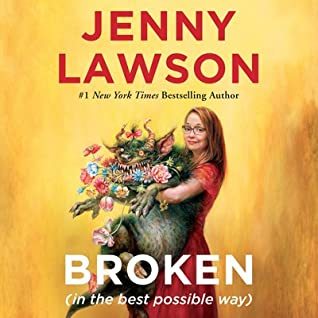
Broken continues Jenny Lawson’s tradition, begun in her earlier books Furiously Happy and Let’s Pretend This Never Happened, of juxtaposing wildly improbable (yet apparently true!) mishaps featuring a bizarre menagerie of creatures, with oh-so-relatable socially awkward mishaps and misunderstandings, with absolutely heart-wrenching descriptions of what it’s like to live with severe depression. Lawson’s style is, as always, breezy and hilarious, sometimes even when she’s writing about very dark things. This is the first book of hers that I listened to on audiobook and, like many memoirs, it works very well in the author’s own voice. Also, I want to give props to the fact that Lawson has the best names for her pets you could possibly imagine — a dog named Dorothy Barker, a cat named Hunter S. Tomcat, and (not really a pet, I guess) a snake that lives in her yard that she calls Hisstopher Columbus because “he keeps trying to discover our house even though we’re already living there.”
The Retreat, by Elisabeth de Mariaffi
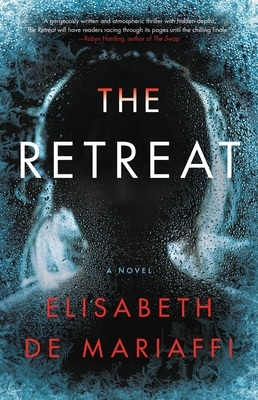
The Retreat is a thriller where nature itself, in the midst of a Canadian winter, is just as much the enemy as any human antigonist, and the result is — literally — chilling. Maeve is a dancer and a single mom of two young kids recovering from an abusive marriage. For the first time in many years, she is able to leave the kids with her mother and get away for a retreat at a Banff-Centre-like spot high in the mountains to focus on the next stage of her career (she’s trying to reinvent herself as the creator of her own dance company). Only a handful of other artists are in residence, along with the off-season skeleton staff. Three men, four women; a crisscrossing mesh of friendships, romances, jealousies and misunderstandings.
There’s a sense of unease and danger from the very beginning, as Maeve arrives and tries to carve out a space to work on her dancing while coexisting with her fellow residents. But when a sudden snowstorm and an avalanche leave the retreat centre cut off from the world, and one of the artists goes missing, the danger suddenly becomes much more real and present. Maeve doesn’t know who — if anyone — she can trust.
I found this book scary and engaging, the sense of menace from both human and non-human predators very real. I would have liked a little more resolution at the end, both of the motives for some of the violence in the story, and for what happens afterwards (because believe me, the public inquest into what happened at this retreat is going to be A DOOZY, and while I don’t expect an epilogue outlining all that, I’d like a little more of a glimpse into the afterstory than we get). The writing is strong, literary without sacrificing the pacing and tone of a thriller, and this definitely kept me turning pages to the very end.
July 27, 2021
Yolk, by Mary H.K. Choi

I read this absolutely great novel about two sisters discovering themselves and each other as young adults trying to make it in New York City. But I’m not going to tell you about it — I read it for the podcast, as the latest in my “Bookswap!” series where Emma and I each read a book the other recommends. You can listen to our conversation about this book and about an old favourite of mine at this SoundCloud link, or by searching “Shelf Esteem” on your favourite podcast app.
July 18, 2021
Marilla Before Anne, by Louise Michalos

It’s going to be impossible for me to talk about this book without talking about Marilla of Green Gables by Sarah McCoy, which I read almost two years ago, and I’m actually surprised not to find more blog posts by readers discussing the two side-by-side. Both novels have the same premise — Marilla Cuthbert’s backstory, beginning in her youth and continuing up to the time Anne Shirley arrives at Green Gables. And both are trying to solve the same problem: what makes Marilla the embittered, emotionally closed-off, apparently fairly unhappy woman we meet at the beginning of Anne of Green Gables, who eventually opens up and shows a softer side under the healing power of an orphan girl’s need for love?
Both novels posit strikingly different backstories for Marilla, but both are hobbled by the fact that they have to end up in the same place. I thought McCoy’s novel gave Marilla a fairly interesting backstory, but played fast and loose with historical accuracy in ways that didn’t make sense or work at all for me.
Marilla Before Anne avoids egregious anachronisms, except in dialogue where some of the things characters say, the ways they express themselves, felt a bit too modern to me. As with the other novel, young Marilla’s character is well and believably drawn, as are those of her brother Matthew and her friend Rachel. The plot remains believable, up until a fairly huge coincidence that affects the outcome of the story in a big way – I won’t spoil it, but I’d love to know what others who read thought about the way Marilla’s story and Anne’s intersect, so you can feel free to make spoilery responses in the comments.
The biggest quibble I had with this novel may not really be a quibble. In essence, it’s not really a backstory for the Anne of Green Gables novel we’ve all read and loved. It’s an alternate backstory for an alternate version of Anne. The story we get in Marilla Before Anne would not and could not, in my opinion, have led to the events of LM Montgomery’s novels as they stand — a huge, crucial factor (this is the spoilery bit I won’t get into) guarantees that major elements of Louise Michalos’s story would have played out differently than how things unfold in the original Green Gables books. Once I thought of it as an alternative re-imagining, I was OK with that, and enjoyed reading the novel as one possible way the prelude to Anne Shirley’s arrival in PEI might have unfolded.
A Thousand Ships, by Natalie Haynes
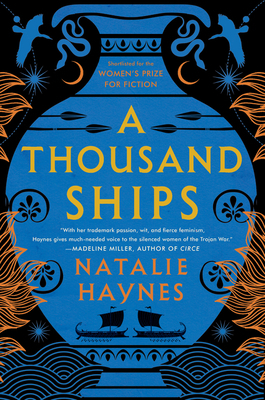
I absolutely loved this woman-cdentred take on Greek mythology and the Trojan war. Haynes gathers up the fragments of women’s stories from a variety of different sources and tells the story of the war and its aftermath in the voices of the many women named in these myths, from queens to common women to goddesses. The scenes and voices range from the heartbreaking to the hilarious — Penelope’s unsent letters to the absent Odysseus are just the funniest, wryest things I’ve read in a long time — and, cumulatively, this woman’s saga of an ancient legendary war ends up reminding us not only of how different stories sound when told by women, but also of the tremendous costs of war that are still being exacted in conflicts thousands of years after the mythical fall of Troy.
Approaching Fire, by Michelle Porter
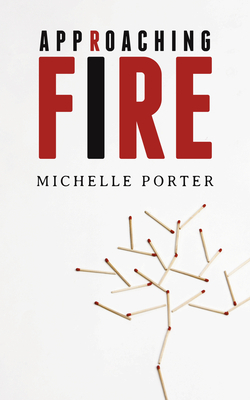
Approaching Fire is a wonderful book to read; a difficult book to ceategorize. It contains elements of memoir, as Michelle Porter’s story of attempting to uncover the stories of her great-grandfather, Metis fiddler and performer Leon Robert Goulet. But there is also poetry, and prose that is closer to essay than to memoir, and found texts like newspaper clippings and advertisements. The multi-genre, somewhat fragmented approach is appropriate for a story that has come down to the author in fragments, some of them confusing and contradictory.
While there’s a part of me as a reader that yearns for a straightforward, chronological, all-prose memoir of a writer’s search for her family roots, I love how deliberately Approaching Fire plays with and frustrates that expectation, reminding me that stories of the past rarely unfold so neatly — and stories of an Metis past in a country that has tried to erase Indigenous stories are even harder to tell in a simple, straightforward way. The metaphor of fire — controlled fires that make the land healthy; out-of-control fires that destroy — is woven throughout the book and adds to its power and poignancy.



